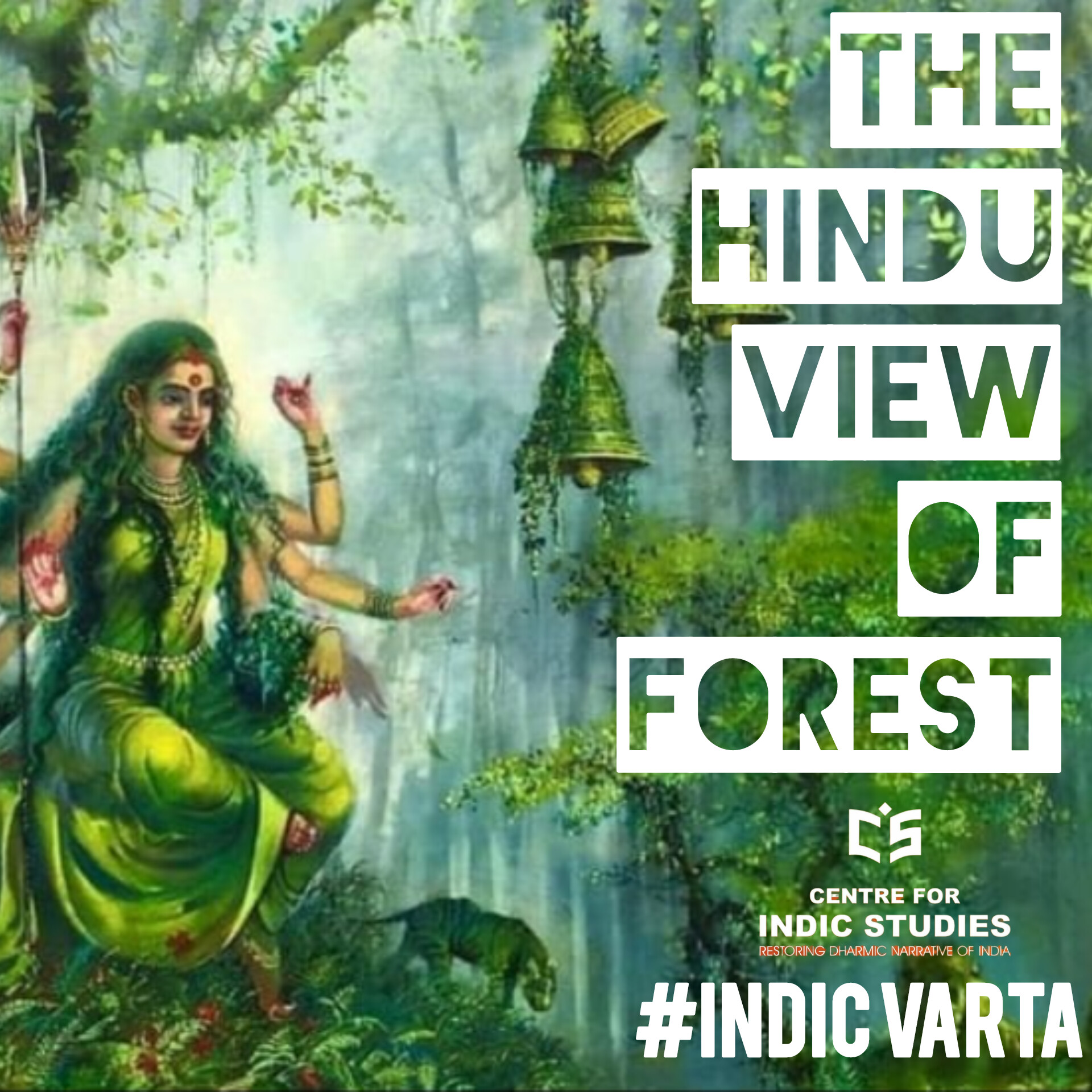- Visitor:110
- Published on: 2024-09-21 01:15 pm
The Hindu View of Forest
In the forest, everyone must take care of themselves. If any member of the herd gets hurt, the herd leaves him behind. Doesn't this remind you of modern society? Think about it.

To understand Hindu narrative and legends, we have to understand the forest as a ‘metaphor’. Forest is an uncontrolled world, where only powerful creatures rule. In other words, since this is a form of nature where the big fish eats the small fish, it has been called ‘Matsya Nyaya’ (fish-like). The idea of ‘survival of the fittest’ applies here. On the other hand, culture is established by making nature our own. In such a world, it is not necessary that only the powerful people dominate. Here the powerful take care of the powerless. In fact, humans are called civilized when our desire to dominate others and be territorial, which animals also have, turn into a desire to help the weak. Because of this, even helpless people can flourish.
Therefore, two types of tunes are found in the Samaveda– the first type of tunes are sung in cultural settlements and the second type of tunes are sung in forests. It is important to explain this difference to understand the transformation of humans from animals to super-human beings. Animals are under the control of hunger and fear. But humans could transcend their own hunger and fear and become sensitive to the hunger and fear of others, making them tolerant towards others.
In the Rigveda, forest is associated with a goddess named ‘Aranyani’. The ‘Aranyani Sukta’, which is dedicated to her, is very descriptive where Aranyani has been described as a dancer wearing anklets. We can hear the anklets, but cannot see the goddess. It has been discussed how Aranyani remains fearless despite living so far away from human habitation and how she nourishes all the living beings without ploughing the earth. We get the initial understanding of forests in Hindu Dharma in this sukta which is repeated in the Taittiriya Brahmana. Goddess Aranyani is worshipped in the Aranya Devi temple in Arrah Nagar, Bihar.
Forests play an important role in the epics like the Ramayana and the Mahabharata. Rama had to go into exile for fourteen years whereas the Pandavas had to go into exile for thirteen years. They reach a world where there is no king. There, the strong dominate the weak, that is, there is injustice. Thus, the idea has been presented in the Ramayana and the Mahabharata that kings should establish dharma by subduing the ‘Matsya Nyaya’ nature.
It is said in thePuranic literature that many gods live in the forests. Shiva is associated with the Daruk-van (i.e. Cedar Forest); Ganesha is associated with the Ikshu-van (i.e. Reed Forest); Krishna is associated with the Vrindavan (i.e. Tulsi Forest); Hanuman is associated with the Kadli-van (i.e. Banana Forest); and the goddess Adishakti is associated with the Tamarind Forest which remains evergreen. These literatures also mention certain enchanted forests where only women reside and men entering there become women. It is said that once Lord Shankar was wandering in the forest with Goddess Parvati. Then some sages reached there with the desire to see him. Lord Shiva and Goddess Parvati were engaged in lovemaking at that time. Parvati felt ashamed after seeing the sages. Seeing this condition of Parvati, Lord Shiva cursed that forest and said, “From today onwards, any man who enters this forest will become a woman!” Since then, men stopped going to that forest and that place became famous by the name Ambika Forest.
Once Vaivasvata Manu's son, Ila, reached that forest while hunting. So, he transformed into a beautiful woman. His horse also became a mare. After becoming a woman, Ila became very sad and started wandering in the forest. Near that forest was the ashram of Rishi Budh (who later became planet Mercury). When Ila reached there in the form of a woman, Budha became fascinated by her. He named Ila as “Ilaa” and then they both got married. Only men like yogis, who have complete control over themselves, remain men even after entering these forests.
Thus, forest is a place where no rules or regulations apply. There are no restrictions on anyone and everything is fair, which keeps the organism alive. Here justice is determined not according to the rules of the society, but according to the laws of nature. Here animals live in groups. Every member of each herd gets to eat food according to a prescribed order of strength. In the forest, everyone must take care of themselves. If any member of the herd gets hurt, the herd leaves him behind. Doesn't this remind you of modern society? Think about it.
- 55 min read
- 4
- 0










